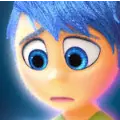On February 22, 2024, Netflix's live-action adaptation of the animated masterpiece "Avatar: The Last Airbender" officially premiered. The original animated series is the top-rated animation on IMDb's animation board. The expectations and demands from the audience for this adaptation are certainly higher than usual.

The animated "Avatar: The Last Airbender" premiered its first season in 2005, followed by the second and third seasons in 2006 and 2007, respectively, totalling 61 episodes. 2012, a spin-off series titled "The Legend of Korra" was released. With such a prestigious background, Did Netflix ruin a classic by adapting "Avatar: The Last Airbender" into a live-action series? What exactly went wrong with Netflix's adaptation?

The "Past and Present" of "Avatar: The Last Airbender" Animation
"Avatar: The Last Airbender" holds a special place in popular culture, evidenced by the appearance of its main character, Avatar Aang, in the game "Nickelodeon All-Star Brawl," alongside other iconic characters from various animated series. Such as "SpongeBob SquarePants", "Teenage Mutant Ninja Turtles."
During its original run, "Avatar: The Last Airbender" won five Annie Awards and one Primetime Emmy Award, in addition to Kids' Choice Awards, Peabody Awards, and more. The series finale of the third season drew nearly six million viewers globally, setting a record for Nickelodeon's viewership at the time.
When the animated series was made available for streaming on Netflix in 2020, it quickly rose to the top of the platform's popularity rankings, further cementing its influence. The numerous awards and accolades, including the prestigious Annie Awards, attest to its excellence. So, what makes this series a "legend"?
A Traditional and Passionate Beginning
Set in a world governed by four elemental powers (water, fire, earth, air), "Avatar: The Last Airbender" revolves around the Avatar, the only individual capable of mastering all four elements. The Avatar must maintain balance and harmony between the world's nations while possessing the power to save humanity from chaos.
Avatar's reincarnation follows a fixed sequence of water, earth, fire, and air, circulating among the four major powers. When the previous Avatar dies, they are reborn into a new infant. Thus, the lineage of the Avatar continues unabated.

Returning to the main storyline, a century ago, Fire Lord Sozin harbored ambitions of world conquest. Avatar Roku, born into the Fire Nation at that time, was unable to prevent Sozin's plans and was ultimately killed by him. With the Avatar gone, the world fell into imbalance. Sozin, aware that the next Avatar would be born into the Air Nomads according to the sequence of water, earth, fire, and air, sought to prevent the Avatar's birth by exterminating the Air Nomads. After a hundred years of dormancy, Katara and Sokka stumbled upon "The Last Airbender" by chance. Katara broke open the iceberg to rescue him, revealing him to be Avatar Aang, the reincarnation of the Avatar.
Awakening from a century-long slumber, Avatar Aang resolved to no longer evade his destiny. They embarked on a journey of self-discipline with their companions. Only through continuous training and mastering the use of all four elements could he fulfill his duty as the Avatar, confront the formidable Fire Lord, and restore balance to the world.
The allure and selling points of a work can determine its popularity. In contrast, its thematic depth and impact are determined by its concept. The ability of a job to be widely circulated often stems from its depth of plot.
The narrative of Avatar Aang's quest to level up by battling adversaries runs concurrently with the story arc of Prince Zuko of the Fire Nation, who undergoes a development arc on the opposing side of the protagonist group. Initially portrayed as an antagonist, Zuko, after grappling with complex internal conflicts and turmoil, ultimately undergoes a redemption arc, aiding the protagonist group in defeating his father and eventually ascending to become the new Fire Lord.
Many instances of political corruption and social inequality are depicted through the artistic expression of the animation. While primarily targeting children, as a cartoon aired on Nickelodeon, the series does not shy away from portraying death, political issues, and the darker aspects of society, making it appealing to children and a wider audience.
The marvelous "chemical reaction" resulting from the fusion of Eastern and Western elements
The naming of the "four bending elements" (water, wood, earth, and air) carries a distinct Chinese flavor. The animation adopts the form of Chinese characters, with each element corresponding to the Fire Nation, Water Tribe, Earth Kingdom, and Air Nomads in the storyline. The martial arts techniques of each race are meticulously designed prototypes in reality.
The "waterbending" used by characters from the Water Tribe is, in reality, more or less inspired by Tai Chi. The design principle lies in Tai Chi's emphasis on grace, breath, and harmonious movements rather than brute force. The production team did not want to portray "waterbending" as too soft in the animation but to imbue them with vitality and life. The fusion of "water" and "Tai Chi" highlights their commonality in the principle of "using softness to overcome hardness."
The earthbending techniques of the Earth Kingdom are based on Hung Ga Kuen, known for its sturdy and robust stances resembling roots. The characteristics are robustness, stability, and forcefulness, combining elements of the "Tiger Crane Paired Form Fist." This reflects the resilience of the "earth" element.
The firebending techniques of the Fire Nation are based on Shaolin Kung Fu. Its characteristics include wide stances, rapid reaction speed, combined punches and kicks, and circular blocking methods, with a wide attack range akin to fire. The design philosophy lies in the danger lurking beneath the gorgeous movements.
The airbending techniques are based on Baguazhang( (Bagua Palm Push)), which is characterized by circular footwork and rapid movements. The symbolism in the animation design is that "airbending", like Baguazhang, relies on continuous circular motion to create incredible power.
Watching this animation is like indulging in a visual feast. It combines the allure of elemental magic and traditional Chinese martial arts with meticulously crafted background music featuring instruments like the Guzheng, Pipa, and Erhu. The overall style is reminiscent of Chinese ink wash painting, creating a stunning and immersive experience for the audience.

The combination of "Western animation and Chinese martial arts" is not rare in the United States and often exhibits a high level of craftsmanship. This is likely due to Western interest in and extensive research on Chinese martial arts, as seen in classic animated series like "Jackie Chan Adventures" and the blockbuster animated film series "Kung Fu Panda."
In addition to its storyline, "Avatar: The Last Airbender" incorporates a profound Eastern charm, Chinese mythological elements, and numerous aspects of traditional Chinese culture into the animation itself, achieving true innovation in combining Eastern and Western elements.
The Emperor of the Earth Kingdom, whose image is based on the final emperor of China, Puyi, appears in Chinese calligraphy on the wanted posters in the animation. The animation also incorporates many other Eastern cultural elements from different countries. For example, Avatar Kyoshi from the Earth Kingdom, from name to attire, draws inspiration from Japan.
How should the live-action adaptation be judged?
Before the exclusive release of the live-action adaptation "Avatar: The Last Airbender" on Netflix, a live-action film adaptation "The Last Airbender" was released in 2010. The film grossed $319 million globally at the time. Still, its massive production cost and promotional expenses for global releases likely resulted in a loss, and the film itself failed to secure a positive reception.
Ironically, the film was nominated for a Golden Raspberry Award that year. Consequently, with such a cautionary tale, many were sceptical and critical of the live-action adaptation when it was announced, fearing that the production company might produce another "The Last Airbender."
After numerous setbacks, "Avatar: The Last Airbender" finally debuted. The first season consists of eight episodes, each averaging about 60 minutes. Typically, works that undergo significant changes and encounter frequent problems don't yield favourable results. "Avatar: The Last Airbender" seems to be no exception.
The production boasts a talented trio of directors: Michael Goi, Roseanne Liang, and Jet Wilkinson. This lineup is quite impressive, especially considering the directors' experience in television, with Michael Goi and Jet Wilkinson having helmed highly acclaimed series like "The Rookie" and "How to Get Away with Murder," respectively. As for the cast, Gordon Cormier and Kiawentiio lead the ensemble, many of whom are of Asian descent, fitting for a story with such an oriental flavor.
Compressing the content of 61 original episodes into eight episodes felt rushed. Many online commenters, even those familiar with the storyline, found the narrative needed improvement. They noted that the live-action adaptation diluted vital character traits, deviating from the original's spirit. While the animated series balanced comedy and emotional depth, the live-action version felt stiff and overly severe. Some appreciated the endearing portrayal of Avatar Aang in the live-action adaptation, focusing more on his inner conflicts rather than his animated counterpart's playful demeanor. This aspect represents a significant departure from the source material.
Suppose viewers are drawn to visual effects and action sequences. This live-action adaptation might satisfy their cravings, providing a visual spectacle, especially with Netflix releasing all eight episodes simultaneously, each running for an hour. However, for those who cherish the original work, this adaptation might need to be revised, as it marginalizes the depth of character development and diverges from the storytelling style of the animated series.
Netflix's Live-Action Adaptations
With the release of the live-action "Avatar: The Last Airbender," Netflix adds another entry to its recent trend of adapting classic animated IPs. Before this, we've seen adaptations of world-renowned animated IPs like "One Piece" and "Yu Yu Hakusho." In addition to "Avatar: The Last Airbender," Netflix has plans to adapt another classic animated IP this year: "Parasyte: The Grey."

Despite frequent live-action adaptations in recent years, Netflix has surprisingly received positive feedback and maintained a relatively good reputation. "One Piece" boasts an IMDb rating of 8.4, a commendable achievement, and during its peak, it became the top-viewed show in 84 countries. "Yu Yu Hakusho" holds an IMDb rating of 7.2.
The story of "Avatar: The Last Airbender" will continue in a new animated film scheduled for release in October 2025. Following Aang, Katara, Sokka, Zuko, and Toph into their twenties and thirties, the film promises to explore new adventures and challenges for these beloved characters.





























Share your thoughts!
Be the first to start the conversation.